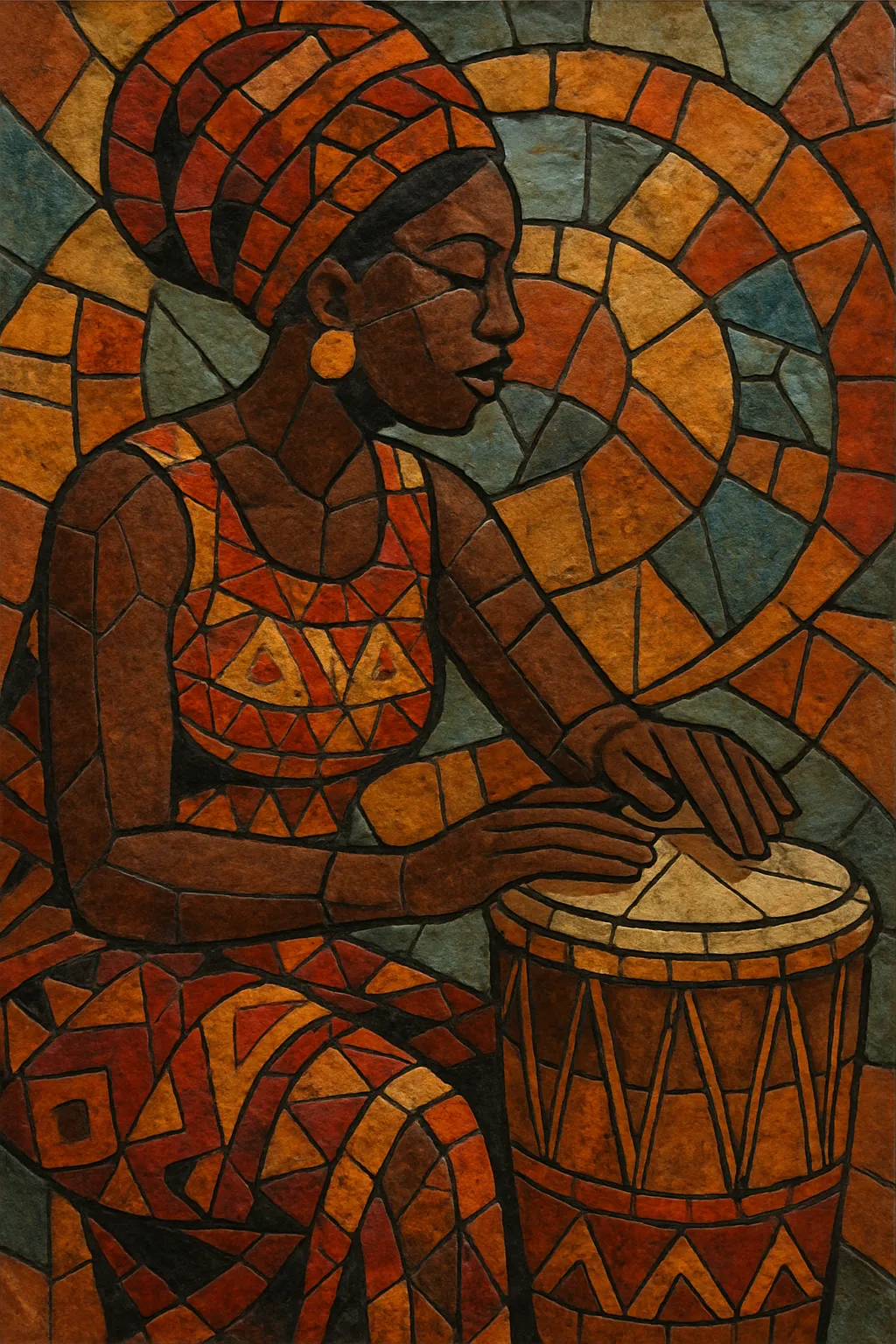Bikutsi is a high-energy dance music from central Cameroon, rooted in the social and ceremonial music of the Beti (including the Ewondo and Eton peoples). Its name is often glossed as “beating the earth,” evoking the powerful, stomping dance steps and the trance-like, percussive drive that define the style.
Traditionally performed with balafon (xylophone), rattles, handclaps, and drums, bikutsi features fast 6/8 cross-rhythms, call-and-response vocals, and lyrics that mix social commentary, satire, and frank discussions of love and everyday life. The modern, urban form electrifies those same patterns with driving bass lines, drum kits, and rapid, treble‑rich guitar ostinatos that mimic balafon figures, producing a relentless, celebratory groove suited to clubs and street parties.
Bikutsi traces its roots to the Beti communities of central Cameroon, where women’s dance songs and ceremonial repertoires used balafon, drums, and handclaps to sustain fast 6/8 grooves. The dancing—marked by vigorous footwork and hip movements—was inseparable from the music, and themes often included social critique and candid depictions of intimacy and daily life.
With migration to cities like Yaoundé in the 1950s, traditional ensembles encountered amplified instruments and radio. Pioneers such as Anne‑Marie Nzié brought bikutsi into recording studios and onto national airwaves, while guitar stylists—most notably Messi Me Nkonda Martin and Sala Bekono—translated balafon interlocking patterns to electric guitar, establishing the modern bikutsi sound.
In the late 1980s, Les Têtes Brûlées projected bikutsi onto the world stage, intensifying its percussive guitars and visual identity while touring internationally. Their work sat alongside the broader Central/West African pop scene, interacting with contemporaneous currents in makossa, soukous, and zouk, yet maintaining bikutsi’s signature 6/8 propulsion and satirical edge.
From the 2000s onward, producers integrated drum machines, synth bass, and club‑friendly arrangements without losing the core rhythmic language. A new wave—often led by women—kept bikutsi commercially vibrant and culturally pointed, singing in Ewondo, French, and Camfranglais and addressing modern urban life while preserving the genre’s humor, sensuality, and social commentary.


